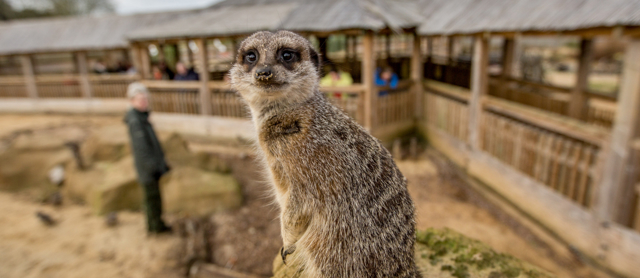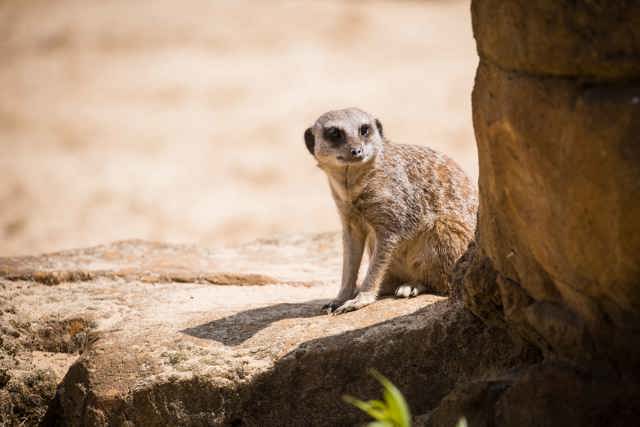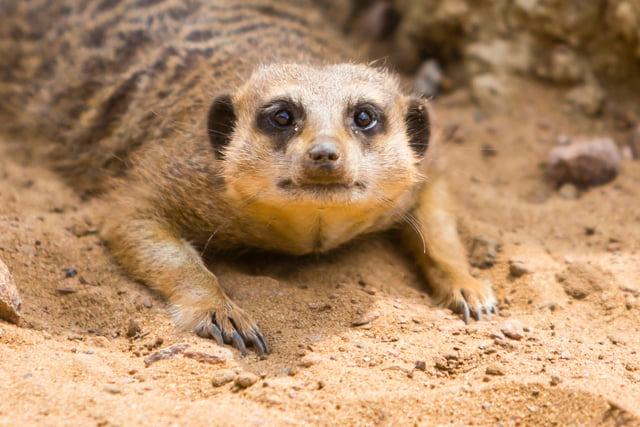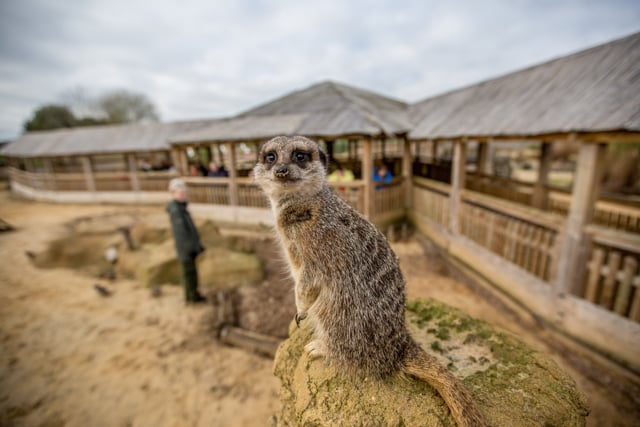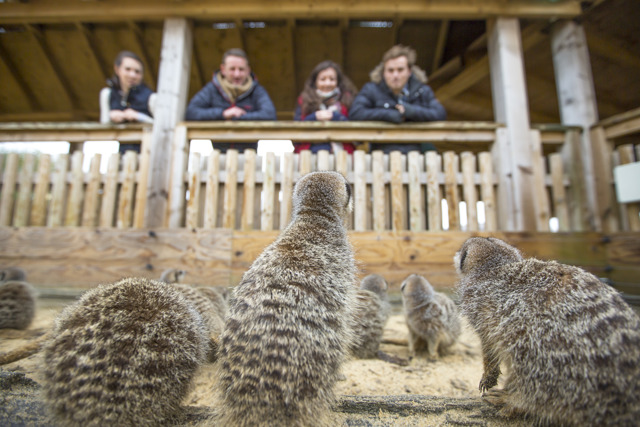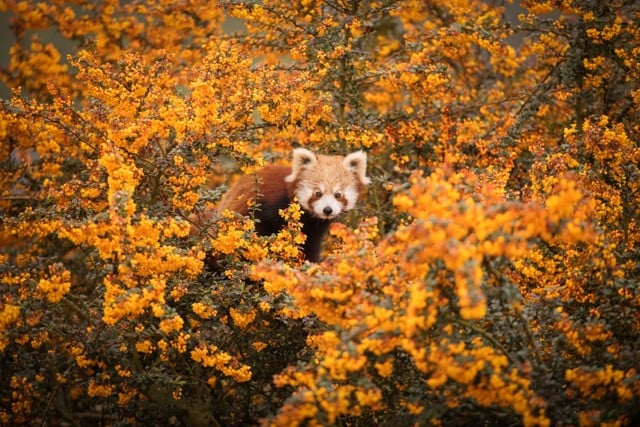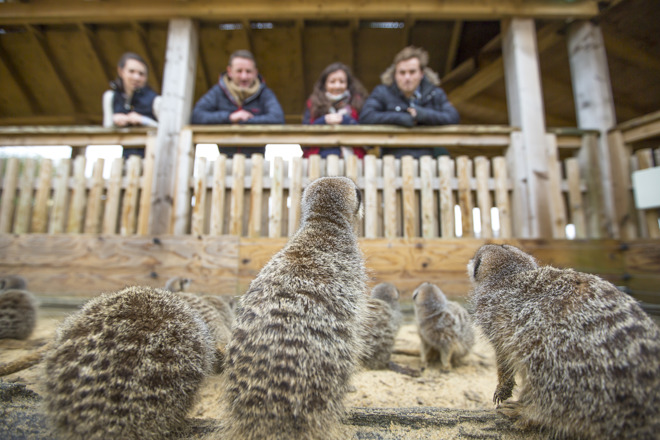
Overview
These curious small mammals are certainly active, they enjoy sunbathing, playing and grooming but one of their favourite activities is foraging for food; these small diggers have very special ears that they can close to keep out the sand while at work. Meerkats have four toes on each feet and very long, non-retractable claws to help them dig.
You can find the mob of meerkats at Woburn Safari Park in their 'Desert Springs' enclosure in the Foot Safari alongside the porcupines and mongoose.
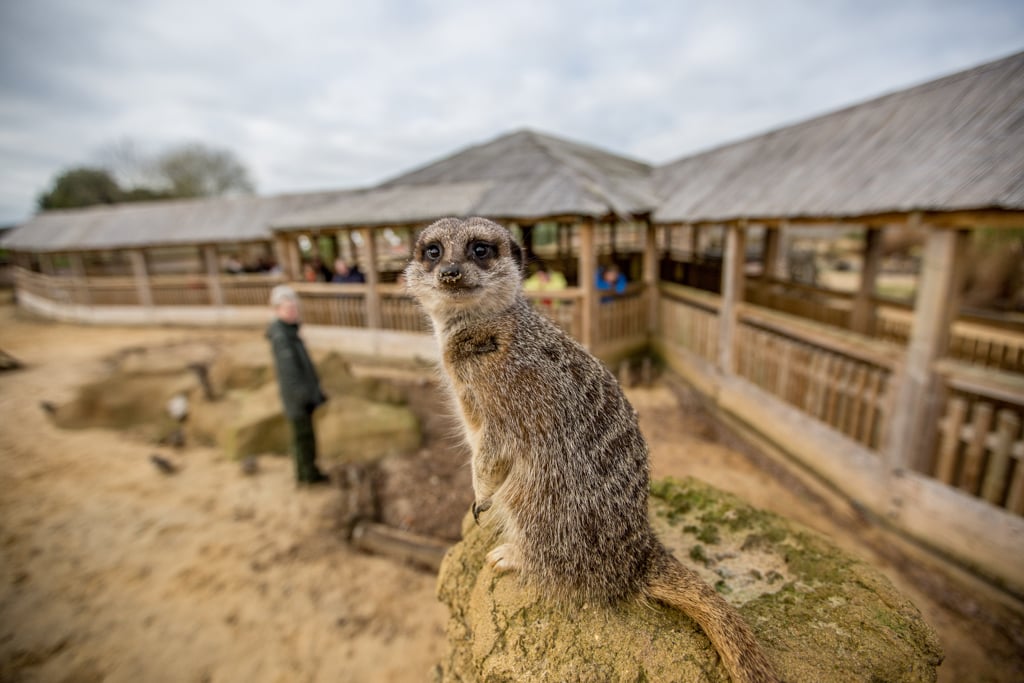
All about us
| Distribution: | South Africa |
|---|---|
| Habitat: | Tropical grassland, desert and semi-desert. |
| Height: | 25-30 cm. Tail length 19-24 cm. |
| Weight: | Less than 1 kg (2.2 lbs.) |
| Gestation Period: | 11 weeks |
| Lifespan: | 12 - 15 years in captivity |
Scientific name: Suricata suricatta
Meerkats are excellent diggers, however they will use existing burrows dug by other animals. These burrows are deep and have a number of entrances; the mob will have several burrow systems within its territory and will move from one to another every few months. They sometimes even share their burrows with yellow mongooses.

meerkat facts
Meerkats are diurnal which means they are active during the day. They are very social and can live in large groups of up to 30 individuals called a gang or mob. The mob is made up of several family groups, with one dominant female and one dominant male who produce the offspring. Meerkat mobs spend a lot of their time sunbathing grooming and playing together to keep the family as a tight unit.
Meerkats have scent pouches below their tails and will rub these pouches on rocks and plants to mark their territory. They will protect their territory fiercely from other meerkat mobs, though they have been known to accept outside individuals into their mob.
Meerkats are slender, with a distinctly slim, tapering tail and long thin legs equipped with powerful claws. The face is pointed with a rounded forehead and their eyes are surrounded by black patches which may help to limit the glare of the sun in the desert. The fur is typically grizzled grey, tan or silvery-brown in colour, with dark, transverse bands sometimes visible across the back, and normally a black tail tip.
Meerkats are generally insectivores; however they will also eat lizards, snakes, spiders, millipedes and centipedes. One of their favourite meals is the deadly scorpion; these dangerous arachnids have large pincers which can still inflict plenty of damage. Meerkats will bravely grab scorpions with their forepaws; they quickly bite off the hazardous stinger allowing them to enjoy the rest of their meal.
In each group, the dominant male and female are usually the only ones to successfully breed, but very occasionally subordinate females will reproduce and subordinate males temporarily leave their group to attempt to mate with females in other groups. Meerkats are sexually mature at about one year old. Mating takes place throughout the year and pregnancy lasts 11 weeks. They have two to five young in a litter, each weighing about 30 grams. Because of the highly social nature of Meerkats, nonbreeding individuals are often part of the pack acting as helpers and caring for young. After around 3-4 weeks the pups emerge from the burrow and are weaned at 7-9 weeks.
Meerkats constantly communicate with each other by using scent, sound and body language. They have a number of different vocalisations, teamwork within Meerkats is key to their survival. Adults will take turns acting as guard while the others look for food without worries. The guard climbs to the highest rock, termite mound, or bush. He or she can stand upright on two legs and then announces the beginning of guard duty with a specialized call. A low, constant peeping, known as the watchman's song, is made when all is well. If a predator is spotted, the guard alerts the others with a bark or whistle.
Meerkats occur in numerous protected areas across its range in Southern Africa. The population is currently relatively stable and common.
